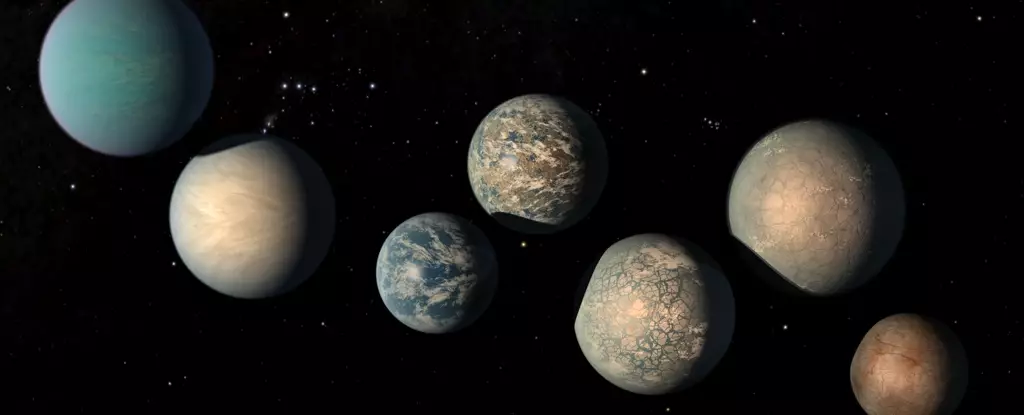The TRAPPIST-1 system, nestled about 40 light-years away from our home planet, has captured the imagination of scientists and space enthusiasts alike since its discovery in February 2017. Comprised of seven Earth-sized exoplanets orbiting an unassuming red dwarf star, this system holds profound implications for our understanding of habitability beyond Earth. Researchers have been particularly intrigued by indications that these planets may contain water – a vital ingredient for life as we know it. However, the debate surrounding their potential for hosting life is complex and layered, highlighted by the unique characteristics of their host star.
Challenges of Red Dwarf Stars
M-type stars, better known as red dwarfs, are smaller and cooler than our Sun. While they represent the most abundant type of star in our galaxy, they are notorious for their stellar activity, including potent flare emissions that can strip atmospheres from orbiting planets. This raises a significant question: can planets like those in the TRAPPIST-1 system retain water despite the hostile environment surrounding a red dwarf? This scrutiny has yielded mixed findings, suggesting that while these planets might possess ample water, it is likely lost in the constant barrage of ultraviolet radiation.
New Insights from the James Webb Space Telescope
The recent observations conducted by the James Webb Space Telescope (JWST) have provided invaluable insights into these enigmatic planets. Specifically, observations of TRAPPIST-1 c have ruled out the presence of a dense carbon dioxide atmosphere, dismantling previous assumptions that the planet might resemble Venus. Yet, the absence of a thick atmosphere does not eliminate the possibility of water vapor or reactive compounds forming due to chemical dissociation processes. These findings point to a critical nexus of volcanic activity; without outgassing from the planet’s interior, the maintenance of a habitable atmosphere becomes increasingly improbable.
Modeling Volcanic Activity and Outgassing
In a significant study led by astrobiologist Trent Thomas of the University of Washington, researchers have developed a theoretical model to estimate outgassing rates on the TRAPPIST-1 planets. By drawing comparisons to the rocky planets in our solar system – Mercury, Venus, Earth, and Mars – they formulated scenarios grounded in the known geochemistry of the planets. Their model revealed that outgassing rates could range from 0.03 to as much as eight times those observed on Earth. However, it also indicated that these planets might exhibit minimal volcanic activity, akin to the relatively dormant state of Mars.
Examining the Mantle and Water Content
The research highlighted that the TRAPPIST-1 planets may possess Earth-like crusts characterized by lower water content than once speculated. According to their findings, the presence of water could contribute to around 1 percent of the planets’ mass fractions, marking a significant deviation from earlier hypotheses. As they explained, this preference for drier mantles aligns more closely with Earth’s composition and presents a stabilized framework for understanding these distant worlds.
Interestingly, while water comprises approximately 71 percent of our planet’s surface, it represents a mere 0.02 percent of Earth’s overall mass, emphasizing that its presence is not always directly correlated with habitability. The variances within TRAPPIST-1’s planetary spectrum suggest a classification ranging from barren, rocky planets to potential “water worlds,” allowing for diverse hypotheses about their geological and hydrological characteristics.
Tomorrow’s Discoveries Await
Despite the tantalizing findings regarding water and atmosphere on the TRAPPIST-1 planets, critical questions about habitability remain unresolved. The implications of volcanic outgassing and atmospheric retention continue to unfold as more observations are conducted. As the JWST and similar instruments embark on their observational missions, the scientific community eagerly anticipates what new data will reveal.
The journey to understanding the TRAPPIST-1 system is far from over, reflecting both the opportunities and challenges that lie ahead in the quest to find life beyond our solar system. As we continue to probe deeper into the cosmic unknown, every small piece of evidence could potentially redefine our understanding of life itself, proving once again that the universe is teeming with surprises waiting to be uncovered.


Leave a Reply